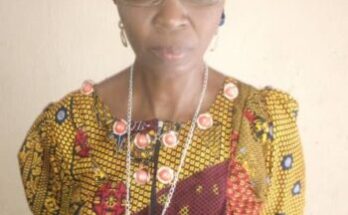Recent data from Nigeria Inter-Bank Settlement System (NIBSS) website should give the generals in the financial inclusion war room of the Central Bank of Nigeria (CBN) some sleepless nights.
The good news from NIBSS is that the number of accountholders captured in the Bank Verification Number (BVN) platform has climbed from 26 million in 2016 to a record 41.3 million in 2017.
Things are really looking up.
The bad news however is that the number of accounts in Nigerian banks has plummeted from 61 in 2016 to 59 million in 2017.
Some blame BVN for the calamity. The argument is that treasury looters abandon their accounts in a desperate bid to avoid prosecution. There are more reasons for the tidal wave of financial exclusion.
Even with the increase in the number of accountholders captured by BVN, there is something to worry about in a country that has less than 60 per cent of the currency in circulation outside the banking system.
The danger is that with the number of bank customers declining, the percentage of cash outside the banking system would be surging proportionately.
The data from NIBSS suggests that the number of adults not captured in the banking network is actually on the increase.
With the 2006 census projection, the number of adults in Nigeria should be around 98 million at the moment.
The CBN puts financial inclusion in the country at 50 per cent.
The apex bank therefore projects that at the current trend, financial inclusion would rise to 80 per cent by 2020.
Unfortunately, statistics from NIBSS suggests that financial inclusion in Nigeria is below the CBN rate of 50 per cent.
Fifty per cent of 98 million is 49 million. Ironically, the number of accountholders captured by BVN stands at 41.
3 million. That amounts to 41.8 per cent of the adult population.
The decline in the number of bank accounts recorded during the period under review questions the chances of the CBN meeting its ambitious target of 80 per cent financial inclusion by 2020. There is a direct relationship between poverty and financial exclusion figures.
The perceived increase in the number of adults outside the nation’s banking system has vindicated claims by the International Monetary Fund (IMF) and the African Development Bank (AfDB) that poverty is on the increase in Nigeria even as the economy lumbered out of recession in the second quarter of 2017.
While the IMF did not attach figures to its claims that more Nigerians were becoming poor as Nigeria becomes richer, the AfDB argued its own position with stark figures. The bank asserted that poverty rate in Nigeria has risen from 70 to 80 per cent.
No one in the federal government has contested the AfDB figures since it was rolled out.
Now statistics from NIBSS has confirmed the AfDB assertion as there is a direct relationship between poverty and financial exclusion. The number of accountholders is dropping because most of the teenagers growing into the club of adults are jobless and have no access to financial services.
The rising rate of financial exclusion is fueled by two major factors.
The first is the rampaging rate of poverty in the land foisted on a docile populace by a weird income distribution system.
A skewed income distribution system selfishly appropriates 25 per cent of the nation’s annual budget to less than 1,000 political office holders. That is primarily why rampaging poverty and ignorance keep 57 million adults out of the banking system. The second factor is the lip service that banks pay to rural banking.
Mobile telecommunication service is a scant 17 years old in Nigeria.
Ironically the service providers have covered practically all the length and breadth of Africa’s largest economy.
There are very few villages that have no access to GSM network. Power supply is epileptic, but most of the villages in Nigeria are connected to the national grid. In Ibiono Ibom Local Government of Akwa Ibom State, there is no village in the largely rural council that is not connected to the national grid.
Unfortunately there is not even a bank’s cash office in the whole local government.
From all indications, it is more expensive to extend power supply and GSM network to those remote villages than to set up a bank cash office at the headquarters of the local government. The people of Use Ikot Amama and Amu in the northern fl ank of the local government have to travel a minimum of 60 kilometres to access the nearest bank branch in Ikot Ekpene.
On some frenzied days such a round trip to a bank in Ikot Ekpene could cost as much as N1,500. The truth is that no sane person would spend N1,500 to withdraw N3,000 in a bank. That probably explains why close to 90 per cent of the adults in that prosperous rural local government shun banking services.
The same is the case with most of Nigeria’s 774 local governments. The banks have chosen to concentrate their services in the urban areas where it is cheap to mobilize funds. CBN’s financial inclusion campaign must start with rural banking.
If GSM network operators could invest in the poor rural communities, banks have no reason to restrict their services to urban areas. The fight against poverty begins with financial inclusion.



